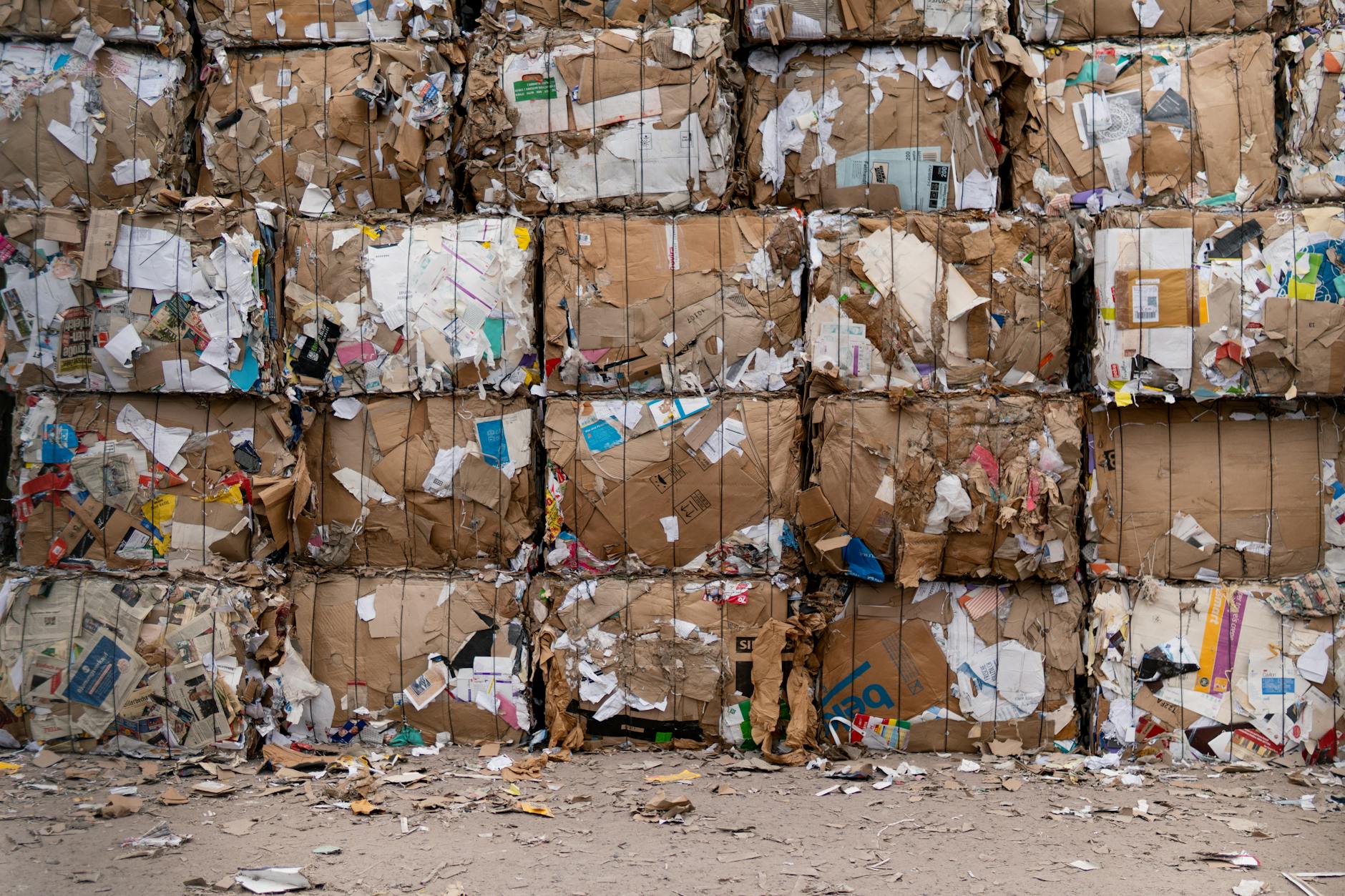Shredded paper might seem harmless, but improperly disposing of it can have a surprisingly negative impact on our environment. While shredding protects sensitive information, it creates small paper bits that are tricky for recycling plants to handle. So what’s the best way to deal with these tiny scraps? It turns out, many options exist beyond the trash can. You can recycle, compost, or even reuse shredded paper if you know the right steps. In this post, you’ll learn the most effective methods to dispose of shredded paper while considering both security and sustainability.
Understanding Shredded Paper
Shredded paper is more than just confetti for your recycling bin. It represents a practical solution for secure document disposal, transforming sensitive documents into an unrecognizable form, akin to turning a book into a puzzle of tiny fragments. Whether you’re managing a business with stacks of confidential files or simply tidying up home receipts, understanding shredded paper is key to aligning with responsible waste management practices. Let’s explore what exactly shredded paper is and how it finds its way back into usefulness with some simple yet impactful applications.
What is Shredded Paper?
Shredded paper is the byproduct of documents being cut into small pieces or strips, making them unintelligible and less of a risk for sensitive information leaks. There are several types of shredded paper, typically categorized based on the shredding technique:
- Strip-cut: Produces long, thin pieces.
- Cross-cut: Creates smaller, confetti-like bits.
- Micro-cut: Reduces paper to even tinier particles, offering the most security.
These shredded pieces come from a variety of sources including old bank statements, junk mail, or even unused printed paper. But despite its humble beginnings, shredded paper plays an essential role in our everyday lives, often transforming from potential waste to a useful resource.
Common Uses of Shredded Paper
Even though it starts as refuse, shredded paper offers multiple opportunities to be put back into action. Here are some of the most common uses:
- Packaging Material: Often used to cushion fragile items. Think of it as nature’s version of bubble wrap.
- Pet Bedding: Ideal for small animals like hamsters and rabbits, providing warmth and absorbency.
- Compost: A welcome addition to compost piles, shredded paper breaks down easily and provides good carbon content.
- Mulching: Keeps soil moist and prevents weeds from taking over while being eco-friendly.
- Crafting: A popular choice in arts and crafts for papier-mâché projects, adding texture and creativity.
These applications show the versatility of shredded paper, turning what could easily end up in a landfill into valuable resources. Whether you’re wrapping a gift, taking care of a pet, or helping your garden thrive, shredded paper stands ready to serve. So, consider these uses as part of your shredded paper disposal plan.
Why Proper Disposal Matters
In our fast-paced lives, the shredded paper often seems to fall to the wayside. Yet, disposing of it properly is crucial. The small bits are not just an environmental issue; they have significant implications for both security and waste management.
Environmental Impact
A massive part of the paper we discard ends up in landfills, where it contributes not only to wasted space but also to pollution. When decomposing, shredded paper releases methane, a greenhouse gas far more potent than carbon dioxide. Moreover, paper production already consumes vast amounts of energy and water, and failing to recycle reused paper properly only amplifies these resource strains. By thinking twice about where our shredded paper goes, we help curtail the over-reliance on virgin resources, conserve energy, and pare down harmful emissions.
 Photo by Alex Fu
Photo by Alex Fu
Safety and Security Concerns
But what about security? Have you ever thought about the risks tangled in those tiny shreds? Improper disposal of shredded paper can leave sensitive data vulnerable to identity thieves. It’s surprising how often identity theft occurs simply because someone failed to fully destroy personal information. Shredded paper, when improperly handled, is a gold mine for fraudsters searching through trash to piece together valuable snippets of information. Proper disposal â either through recycling or secure bins â ensures that our private information remains just that: private. By responsibly managing shredded paper waste, we dismiss those lurking risks and safeguard our identities.
Methods of Disposing Shredded Paper
Disposing of shredded paper is more than just tossing it in the trash. There are several responsible methods that not only protect the environment but can also offer practical benefits. Let’s explore these options.
Recycling Shredded Paper
 Photo by Polina Tankilevitch
Photo by Polina Tankilevitch
While you might think shredded paper can be easily recycled, it’s not as straightforward. The tiny pieces often slip through sorting machinery at recycling plants, leading to a less efficient process. But don’t fret, there are ways to prep your shredded paper for recycling:
- Bag it Up: Collect shredded paper in large paper bags and seal them before placing them in your recycling bin. This prevents any loss during transportation.
- Mix with Other Paper: Some facilities prefer mixed paper collections. Combine shredded paper with other paper types before recycling.
- Contact Local Facilities: Check with your local recycling center for specific requirements, as some places prefer shredded paper to be dropped off directly.
Composting Shredded Paper
Embrace composting to give your garden a boost. Shredded paper can be an excellent carbon source for your compost pile, helping balance the nitrogen-rich greens:
- Avoid Glossy Prints: Stick to non-glossy paper to avoid introducing toxins into your soil.
- Mixing: Combine shredded paper with moist organic material to enhance water retention and air circulation within the compost.
- Layering: Alternate layers of shredded paper with kitchen scraps to maintain a balanced compost blend.
Composting shredded paper not only reduces waste but enriches your compost, laying the groundwork for healthier plants.
Using Shredded Paper as Fill Material
Shredded paper doesnât have to end its life in disposal; its true potential shines as a multipurpose filler:
- Packing Material: An eco-friendly alternative to bubble wrap, use shredded paper to securely wrap fragile items.
- Pet Bedding: Perfect for small pets, shredded paper offers warmth and absorbency.
- Insulation: Combine it with other materials for insulating drafty spaces around the home.
These applications transform shredded paper into a versatile resource, proof that one man’s trash can indeed be another man’s treasure.
Disposing in General Trash
Though not ideal, disposing of shredded paper in the trash is sometimes necessary. Hereâs when itâs acceptable:
- No Other Options: If recycling and composting aren’t feasible due to local regulations or lack of facilities.
- Small Quantities: When dealing with minimal amounts, putting it in the trash could be the most efficient, especially if it’s unable to be recycled due to contamination.
- Containment: Always bag shredded paper to prevent scattering, keeping things tidy and minimizing pollution.
Though throwing shredded paper in the trash isn’t the best environmental choice, there are times when it’s the most appropriate action.
Best Practices for Disposal
Properly disposing of shredded paper can make a significant difference both environmentally and security-wise. While it might be tempting to throw it all in the nearest trash can, there are better methods that benefit both you and the planet.
How to Separate Shredded Paper for Recycling
Separation is key when it comes to recycling shredded paper. Mixing different materials can lead to contamination, which may result in larger batches being sent to landfills. Here are some handy tips to keep your shredded paper pure and ready for recycling:
- Identify Non-Paper Items: Remove non-paper elements like plastic or metal since they can disrupt the recycling process. This includes staples, paperclips, or any plastic windows from envelopes.
- Check Local Guidelines: Different cities have different rules. Some areas allow shredded paper in certain containers, while others may require it to be dropped off directly at recycling centers. Always verify first to avoid mishaps.
- Use Paper Bags: Placing shredded paper in paper bags helps keep it contained. It prevents scattering during transport and aids in the recycling process.
- Avoid Over-Shredding: If possible, only shred portions with sensitive data. This reduces the amount of shredded paper and allows larger pieces to be more easily sorted and recycled.
These practices ensure that your recycling efforts pay off and help your shredded paper find a second life rather than sitting in a landfill.
 Photo by SHVETS production
Photo by SHVETS production
Storing Shredded Paper for Disposal
Storing shredded paper properly ensures it remains ready for recycling or composting:
- Dry Area: Keep shredded paper in a dry, cool place. Moisture can lead to mold, making the paper unsuitable for recycling.
- Use Recyclable Containers: Store in recyclable storage bags or boxes to make transferring easier. This setup keeps your paper in one place and avoids messes.
- Avoid Plastic Bags: While it might seem convenient, plastic bags can cause issues in recycling facilities by jamming machines or misunderstanding intentions.
Whether you decide to recycle or compost, keeping your shredded paper organized and dry ensures that you’re ready to dispose of it responsibly at any moment.
Conclusion
Proper disposal of shredded paper isn’t just about getting rid of waste; it’s about making choices that protect our environment and privacy. By recycling, composting, or repurposing, we reduce our eco-footprint and keep confidential information safeguarded. These strategies make sure that shredded paper doesn’t just become landfill waste, but a resource to be used thoughtfully.
Take a moment to check your local recycling guidelines or set up a composting system at home. Small steps in your disposal habits can have a big impact on the environment. Have you considered how you can implement these practices into your daily routine? Doing so not only lessens your environmental impact but also sets a standard for others to follow.

